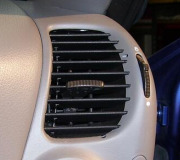You need a new mechanic! What you've described a dozen different ways is a simple engine misfire. That has nothing to do with the crash or the frame. I have to be careful when I say that because the cause of the misfire could have been caused by the crash, but we'll consider that later.
Your main observation is the car does not need to be moving to feel the vibration. No need to look at the frame, tires, suspension, or anything like that. The frame can be twisted into a pretzel and it's not going to cause a vibration when the car isn't moving. The tires can be flat and the wheels can be bent into squares, but you won't feel that until the car starts to move.
The place to stat is by observing the engine when it's idling. If it's misfiring, you'll feel and hear it. The Check Engine light should be on too, and the diagnostic fault code will specify which cylinder is misfiring. The cause could be as simple as a worn spark plug.
Now, if we were to assume the vibration is the result of the crash, you may be feeling normal engine vibration that is being transmitted into the car body. That COULD be the result of bent sheet metal causing one of the engine mounts to transfer that vibration. Mounts are two metal brackets with a rubber isolator in between. The rubber prevents normal vibration from being felt in the passenger compartment. If something is bent that allows the two brackets to rub on each other, the normal engine vibration will be transmitted into the car. The same thing can happen when a mount breaks due to dry-rotted rubber isolators.
The additional clue to something being bent is it will affect the alignment. You will observe the car pulling to one side when you let go of the steering wheel, and / or the steering wheel will be off-center when driving on a straight road.
SPONSORED LINKS
Monday, January 16th, 2017 AT 4:57 PM



